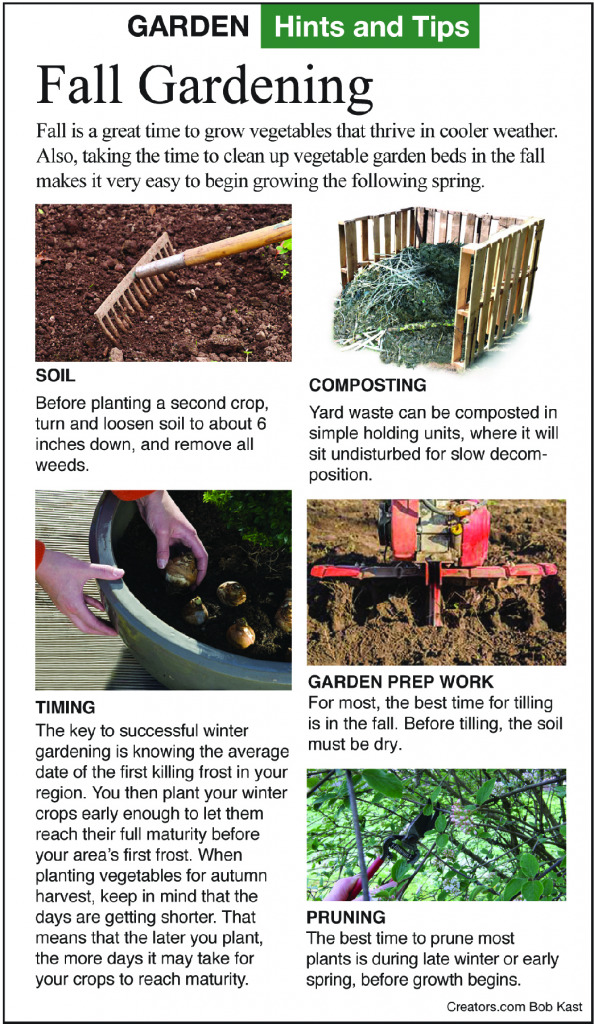Subscriber Benefit
As a subscriber you can listen to articles at work, in the car, or while you work out. Subscribe NowNormally, August weather is hot and dry all across the country. In spite of that, it is still a good month to do many gardening and landscaping tasks.
 Many vegetable crops produce more and have higher-quality fruit in cool weather, when the plant is not stressed. During the first half of August, plant beans, beets, broccoli, cabbage, cauliflower, greens, lettuce, spinach, radishes and turnips. They will produce crops when the cool weather arrives. During the last half of August, sow “quick crops” such as greens and radishes. Be sure to keep newly planted crops watered.
Many vegetable crops produce more and have higher-quality fruit in cool weather, when the plant is not stressed. During the first half of August, plant beans, beets, broccoli, cabbage, cauliflower, greens, lettuce, spinach, radishes and turnips. They will produce crops when the cool weather arrives. During the last half of August, sow “quick crops” such as greens and radishes. Be sure to keep newly planted crops watered.
If weeds have taken over your garden, there is still time to get production from it. Use a hoe or string trimmer to knock down the weeds, and then try a mulch of about five sheets of wet newspaper between the rows. Pick off any fruit of edible size, even if it has some sort of damage. This will spur more production.
Other garden activities for this month include fertilizing strawberries, building compost areas and checking (and maybe spraying) sweet corn for earworms.
In the landscape, continue watering and fertilizing annuals, container plants and fall blooming perennials such as chrysanthemums and asters. Continue watering but not fertilizing perennials, shrubs and trees to begin the hardening off process. In the dry Southwestern parts of the country, most landscape plants are adapted to not need much water during the summer, so don’t overwater them.
Many people think they can’t plant new landscape plants in the heat of summer because they will have to water the plants. If they had planted the plants in the spring, would they be watering them in the hot, dry weather? Of course they would. So, trees, shrubs and ground cover grown in containers can be planted at any time. Balled and burlapped plants dug last fall can also be planted.
Early fall is when you can divide spring blooming perennials and remove spent flowers from perennials and annuals. Prune summer-blooming shrubs but not spring-blooming shrubs. Most of the spring bloomers have next spring’s flower buds already on them.
It is time to begin thinking about next spring. Spring bulb catalogs are arriving by mail; order early for planting later this fall. Plan on planting some bulbs along your unused side yard. You can bring them in as cut flowers next spring.
Grubs are the larvae of several species of beetles, such as the June bug, Japanese beetle and masked chafer. The grubs feed on the grass roots so the lawn can be picked up as though it was freshly laid sod. It takes about 10 grubs per square foot to justify chemical treatment. The organic treatment of applying disease organisms to kill the grubs tends to be less effective. Many people waste a lot of money treating a nonexistent grub problem. Watch the lawn for excessive bird activity, as they may be feeding on the grubs. Skunks and other mammals also dig up lawns looking for grubs.
The fall migration of birds starts in August. Shore birds are among the first to head back to the summer coming in South America. Watch the edges of ponds for them. New birds will be coming to the feeders, so look carefully at each bird. In the fall, many birds have a duller plumage than they had in the spring.
I have enjoyed writing these columns for the past 30 years and have received much help and fine criticism. If you have any gardening or landscaping problems, I would like to try to help, so write me at the email address below. Thanks for your kindness, and may your thumbs turn green!
Email questions to Jeff Rugg at [email protected].
Please enable JavaScript to view this content.

